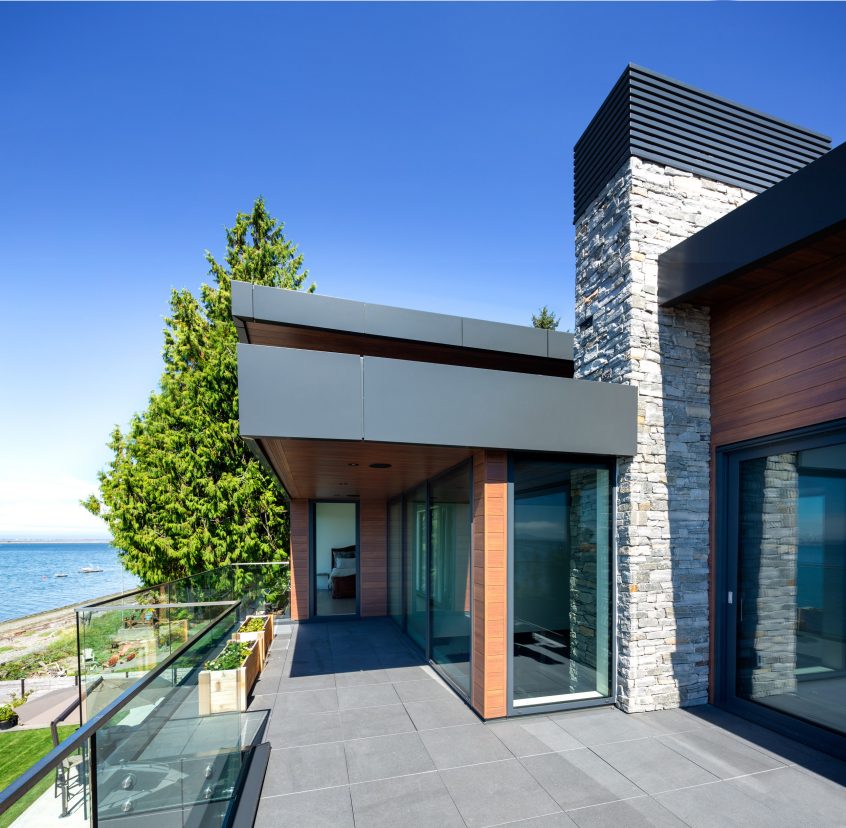Metal cladding can survive extreme weather, shielding the building from rain, wind and UV radiation. This makes it an excellent choice for structures in locations prone to severe weather occurrences. Furthermore, metal cladding requires less upkeep, lowering building owners’ long-term expenditures.
Metal cladding also provides a plethora of design options. It may be curved and sculpted into a variety of profiles, allowing architects to construct one-of-a-kind and visually stunning facades. Metal cladding may make a structure look futuristic and sleek, helping it stand out in an urban context.
Metal cladding also improves energy efficiency in commercial structures. Metal cladding, when appropriately insulated, can assist limit heat transfer, resulting in lower energy use for heating and cooling.
Over time, this can result in considerable cost savings for building owners. Metal cladding is also recyclable, making it an environmentally favorable solution for sustainable building practices.
Metal Cladding Applications in Residential Buildings
While metal cladding siding is frequently linked with commercial structures, its use in residential design is growing in popularity. Metal cladding may be utilized to create distinctive and modern facades in residential settings, elevating the overall appearance of the property. Metal cladding can be used to cover the whole outside of a house or utilized selectively to highlight certain architectural characteristics.
It may be mixed with other materials such as wood or concrete to produce a distinctive and visually pleasing look. The use of various materials provides depth and texture to the facade, lending character and appeal to the structure.
It protects the building from the weather and ensures its life. Metal cladding is also resistant to pests like termites, which can wreak havoc on traditional construction materials. This makes it an appealing alternative for homeowners seeking a low-maintenance and long-lasting exterior solution.
Metal cladding architecture can help reduce energy consumption in residential structures. It helps manage the temperature within the home by adding an extra layer of insulation, decreasing the need for heating and cooling equipment. This not only saves energy usage but also makes the tenants’ living environment more comfortable.
Future Trends in Metal Cladding
Metal cladding uses and possibilities are expanding as technology and design trends improve. We should expect to see even more imaginative uses of metal cladding in architecture in the future.
The inclusion of ecologically friendly components into metal cladding systems is one emerging trend. This involves incorporating solar panels into the façade, allowing buildings to generate their own renewable energy while maintaining an aesthetically pleasing facade.
Sensors and actuators are employed in these systems to monitor and modify the environment of the building. Smart metal cladding, for example, can detect temperature changes and adjust its insulating properties accordingly, maximizing energy efficiency. Technology integration with metal cladding systems has the potential to alter how buildings operate and interact with their surroundings.
Conclusion
Metal cladding has evolved into an important instrument in metal cladding architecture, with several applications and benefits. Metal cladding offers longevity, elegance, and energy efficiency to a wide range of structures, from commercial structures to residential residences.
Its ability to create visually appealing facades while withstanding adverse weather conditions makes it a popular choice among architects and designers. As technology and design trends advance, we may expect to see even more creative use of metal cladding in the future.
Metal cladding has the potential to change the way we think about architectural design, whether via the inclusion of sustainable features or the development of smart systems. So, whether you’re a construction professional or just curious in the industry.

